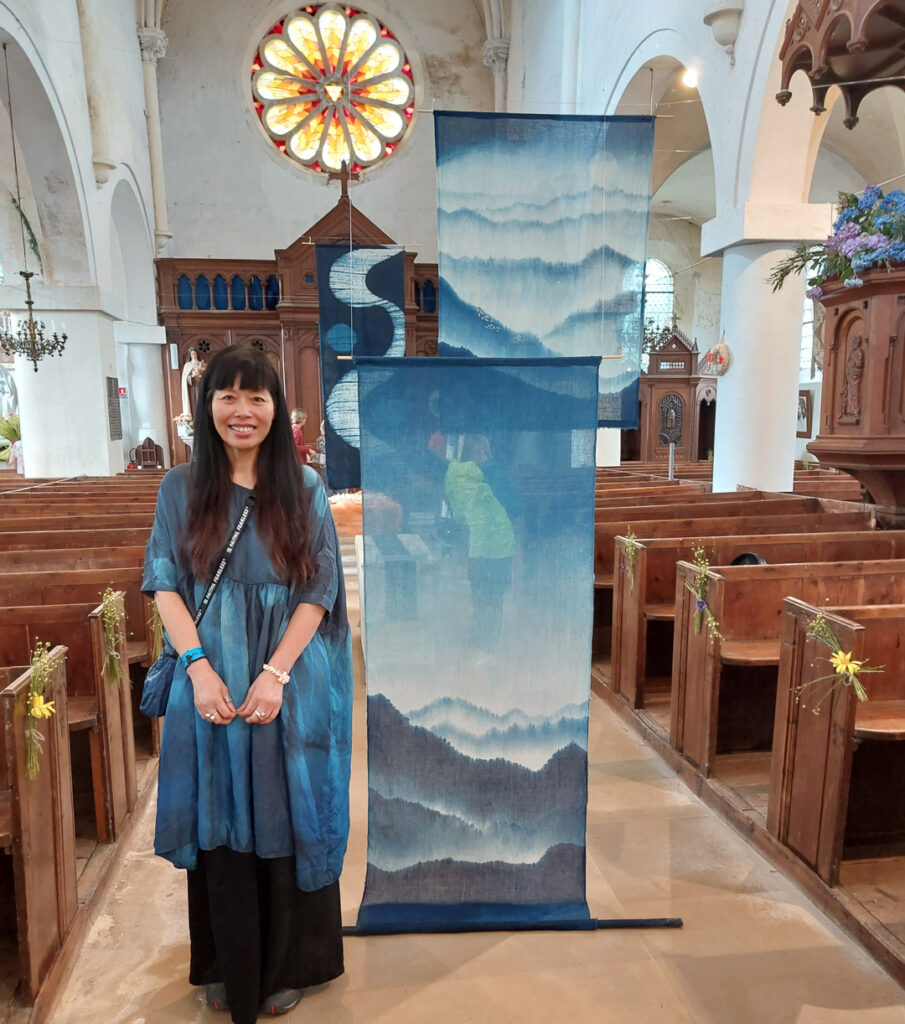Indrasen Vencatachellum reports on a long-standing festival in northern France that this year chose a marine theme.
Haute-Normandie, in the North of France, is a unique region for the worldwide production of quality textile flax Every year in July, nine communes in the Caux area team up for three days for the Linen Festival. The 31st edition of this Festival was under the banner of the Ocean, combining the topical concerns for a sustainable development with due care for the environment.
Thousands of visitors head there, all lovers of the natural fibre that is flax, and the unique landscapes it shapes. Some twenty exhibitions of contemporary or traditional textile art, a linen fabric fair, fashion shows, tours of the Terre de Lin factory and creative workshops are all part of this pastoral journey from the seaside to the flax fields. It is an interesting example of the involvement of the local authorities and of civil society, with some 300 volunteers in the organizing team,
Linen fabric has a rich history that goes back millennia in the region of Haute Normandie which covers 40 % of the national production. This versatile textile, woven from fibres collected from the stems of flax plants, had dropped off in popularity in modern times due to the development of the cotton gin, which made cotton fabric much faster and cheaper to produce. Today, linen is experiencing a comeback in a major way as designers and consumers alike embrace a more sustainable future in fashion. Cotton is coming to the forefront as the antithesis of sustainable fabric production. It’s a crop that requires immense amounts of irrigation, wasting precious water.
Linen is still one of the most sustainable fabrics and is a much more environmentally friendly option than cotton. Flax plants require significantly less water than cotton throughout their growth cycle. In addition, with the implementation of farming practices that protect the soil, flax can be produced in a way that doesn’t harm the environment, but in fact, helps to regenerate the soil. Also, in contrast with cotton, the entire flax plant is harvested and used – fibre can be collected from both the stem and roots and the seeds can be eaten whole or made into oil.
Among the creative artisans participating in this year’s festival, we have singled out two whose original works illustrate at best the symbolic alliance of linen and the ocean as a source of inspiration.
The master weaver, Maite Tanguy, is inspired by the materials gathered from her Britanny coast, whether seaweeds, corals, pearls or cuttlefish bone.
“I am fascinated by the sea and I love to weave it. My imagination is carried far away by the impression of penetrating the wave and being one with it. The titles of my works are revealing: Murmurs of the waves, Kuroshio (“warm current” in Japanese), Winkles, Flying fish, The blue wave, Imaginary seaweeds….”
On the other hand, the indigo linen works of Yong Mei Liu invite us to a spiritual journey, where the folds of fabrics are an ever-ending circle, a symbol of our eventual reincarnation.
The Festival du Lin in Haute-Normandie, France was 7-9 July 2023
Indrasen Vencatachellum is from Mauritius. He is former Director of the UNESCO Programme for Crafts and Design, currently an Advisor to World Crafts Council-International.




